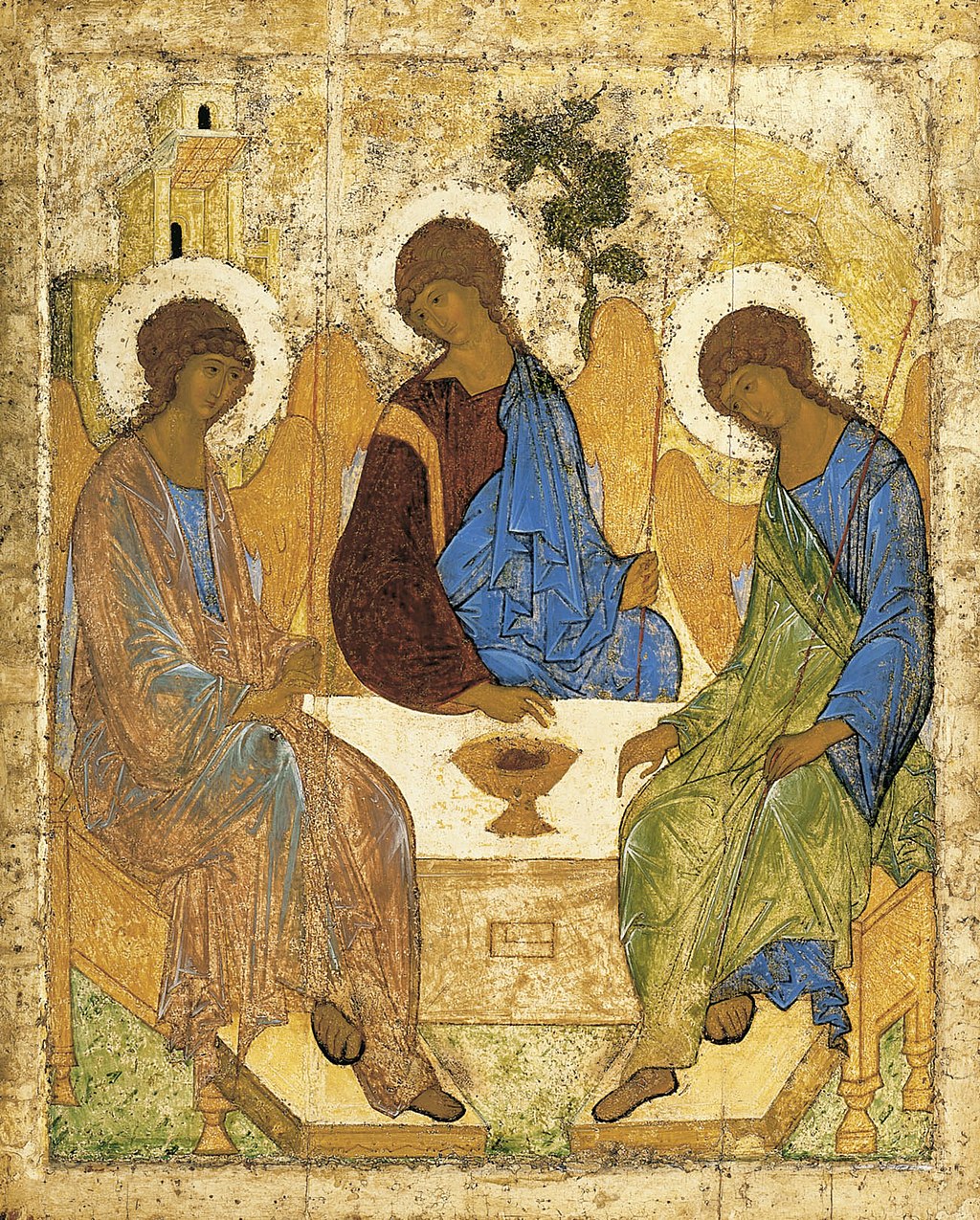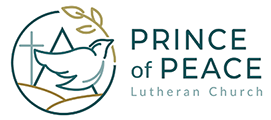
“The Trinity” is considered the most famous icon of the Russian Orthodox church. The other name for this artwork is “The Hospitality of Abraham,” for it’s based on the story from Genesis that was our focus text during worship yesterday. I have been fascinated by this painting ever since first seeing a photo of it during my time in seminary. I would love to make a pilgrimage to experience it in person someday. But today, that feels like a nearly impossible feat.
“The Lord appeared to Abraham by the oaks of Mamre, as he sat at the entrance of his tent in the heat of the day. He looked up and saw three people standing near him.” This is how Genesis 18 begins. And it’s where trinitarian Christians find a scriptural witness for the three-fold embodiment of the divine. “The Lord (singular) appeared,” and then Abraham “saw three people (plural).” What a delightfully confounding way to begin this story.
What I love about this story, is how when Abraham is confronted by this perplexing appearance of God, his impulse is to offer some basic hospitality. In the heat of the day, offering water, a shady place to rest, and a little fresh bread would be an invitation difficult to refuse. And the three-fold presence accepts, enabling a conversation that leads to the reiteration of God’s promise to Sarah & Abraham, and Sarah’s response of laughter. For all these reasons, I chose this passage from scripture to be read during my ordination service and as I began my ministry.
This iconic representation of this moment is believed to have been painted by Andrei Rublev sometime in the early 15th century. It was commissioned to honor Saint Sergius of Radonezh who established one of the most revered sites of the Russian Orthdox church, the Trinity Lavra of St. Sergius monastery, near Moscow in Russia. The icon hung in the Lavra (chapel) of the monastery for 400 years, until it was moved into a state-run gallery in 1929. The government returned the icon briefly to the monastery in 2022 but shortly after moved it to the Cathedral of Christ the Savior, near the Kremlin in Moscow.
History is full of examples where political leaders desire to leverage the influence of the church for strategic gain. It’s hard not to see how this is the case with Rublev’s icon. Making a visit to see this inspiring piece of art and important remnant of church history seems so very complicated by the current political realities that surround its location. Let’s pray that God might find a path through the misguided actions and malevolent intentions of human actors to continue revealing Godself in ways that stand in delightful opposition.
May God’s peace find you today. -Pastor Peter
Let us pray… God of delight, in spite of our misguided ways, continue revealing yourself in the beauty created around us. Inspire us to find the pathway of peace, where simple hospitality and amusing surprise await. Amen.
